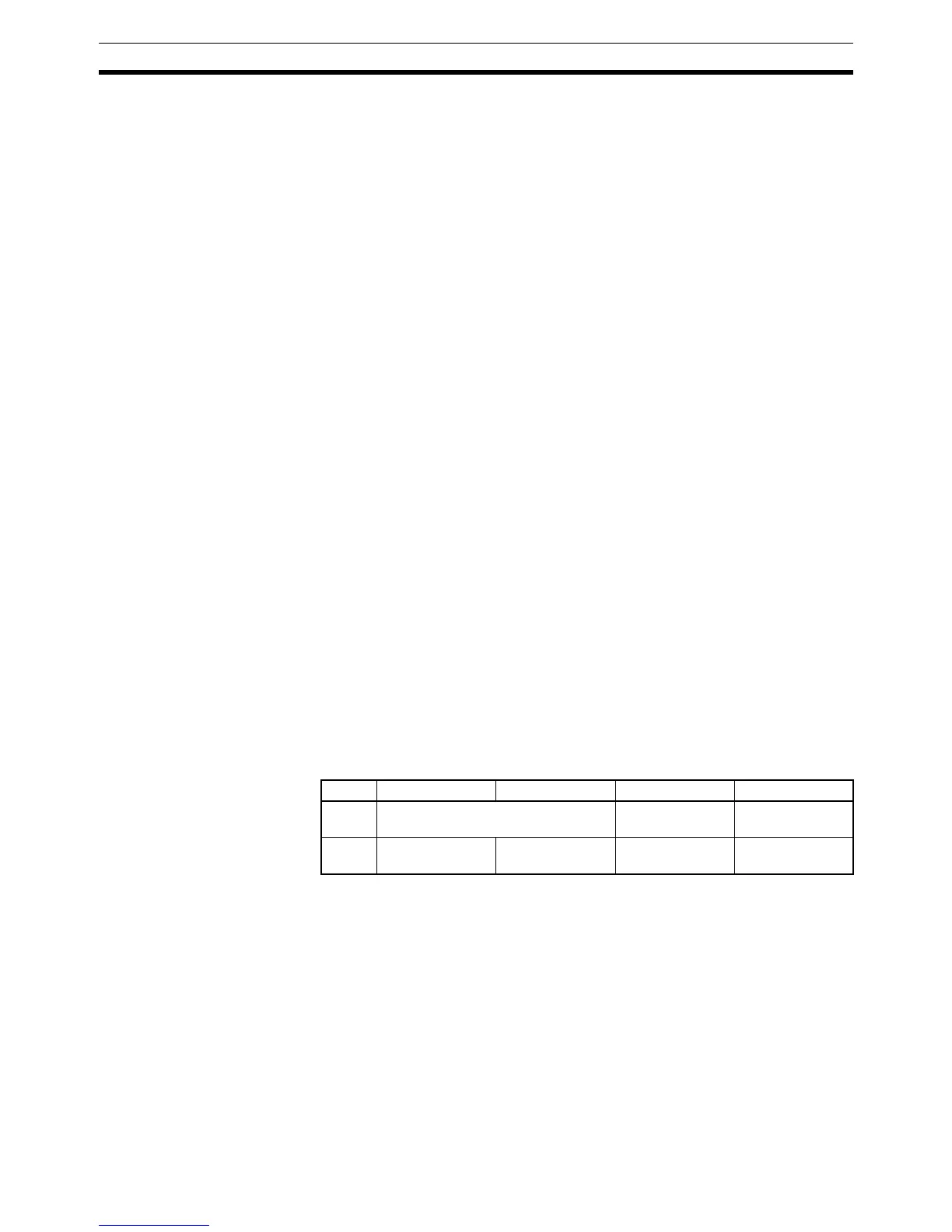408
Network Instructions Section 5-29
When the destination node number is set to FF, the same data will be broad-
cast to all nodes on the specified network. When broadcast transmission is
specified, responses will not be returned and transmissions will not be retried.
If the Network Instruction Enabled Flag (AR 0209) is OFF when SEND(90) is
executed, the instruction will be treated as NOP(00) and won’t be executed.
An error will occur and the Error Flag will be turned ON.
If the Network Instruction Enabled Flag (AR 0209) is ON when SEND(90) is
executed, the Network Instruction Error Flag (AR 0208) and Network Instruc-
tion Enabled Flag (AR 0209) will be turned OFF, the Network Instruction Com-
pletion Code will be set to 00, and the data will be sent to the node(s) on the
network.
When a current-bank EM area address is specified for the destination begin-
ning word (D), the transmitted data will be written to the destination node’s
current EM bank. Indirect addressing can be used for the destination begin-
ning word (D) when transmitting to PCs that have larger data areas than the
CQM1H such as the CS1-series or CV-series PCs. Indirect addressing can
also be used to change the destination beginning word to suit the circum-
stances.
If data will be transmitted to nodes in other networks, routing tables must be
registered in the PCs (CPU Units) in each network. (Routing tables indicate
the routes to other networks in which destination nodes are connected.)
Only one network instruction may be executed at one time. To ensure that a
second network instruction isn’t executed until the first is completed, program
the Network Instruction Enabled Flag (AR 0209) as a normally open condi-
tion.
Never change the control data (C through C+3) while data is being transmitted
and the Network Instruction Enabled Flag is OFF.
Noise and other factors can cause the transmission or response to be cor-
rupted or lost, so we recommend setting the number of retries to a non-zero
value which will cause SEND(90) to be executed again if the response is not
received within the response monitoring time.
Indirect Destination Beginning Word Designations
D is used to specify the destination beginning word as follows when indirect
specification is designated:
CS1-series PCs and CV-series PCs have larger data areas than CQM1H, so
the beginning words for sending and receiving at destination nodes cannot
always be directly specified by means of SEND(90) and RECV(98) operands.
Moreover, depending on circumstances, it may be desirable to change the
beginning word at destination nodes.
In such cases, set the “Direct/Indirect” control data designation to “1” (Indi-
rect), and specify the beginning words for sending as described below.
The beginning receive word is determined by the contents of the destination
node’s D and D+1 words.
Word Bits 12 to 15 Bits 08 to 11 Bits 04 to 07 Bits 00 to 03
D Area type 0 Word address
(5th digit)
D+1 Word address
(4th digit)
Word address
(3rd digit)
Word address
(2nd digit)
Word address
(1st digit)

